Sauermoser
Montag, 28. Februar 2011
|
|
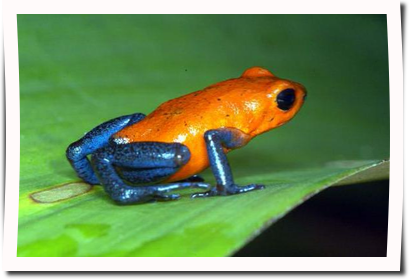
What is their class name and their phylum or group?
My group is amphibians. Their name is Amphibia. This is their class name. They are a part of the phylum Chordata. This includes frogs and salamanders.
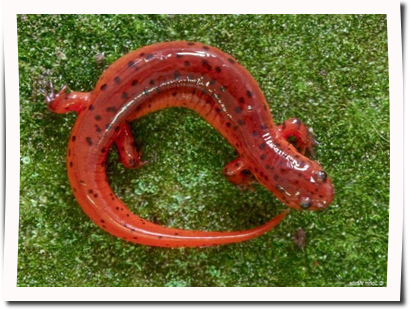
What are some examples of this group of animals?
One example of an amphibian is a frog. Some more examples are salamanders and toads. One other one is a newt. Another one is a caecilian or a worm-like creature.
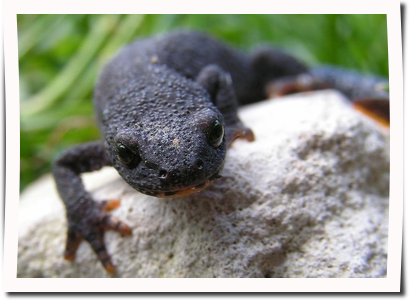
How do these animals reproduce? What is their life cycle like?
For Amphibians to reproduce, the male fertilizes the female's eggs after they have left her body. The female usually lays eggs in clumps or strands. Some amphibians take the time to wrap all their eggs in leaves to protect them. After the egg hatches, you have larva. Tadpoles are an example of larva. After the animal is larva, it changes into an adult.
The Olm
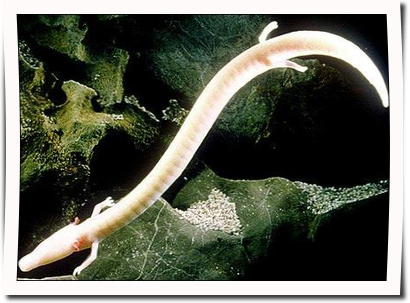
Interesting Facts
1. The Olm can survive up to 10 yrs without food!!
2. They can live to be over 58 yrs old!!
3. They are born with good eye sight, but with the complete darkness around them, their eyes stop developing and a special skin grows over them. Their eyes are still light sensitive though.
4. They have extremely hightened senses such as smell, taste, hearing and electrosensitivity, just like sharks.
5. A female olm will lay up to 70 eggs over a 25 day period. They hatch between 85-185 days depending on water temperature. The young live off of yolk stored in there digestive systems for about a month.
6. They eat primary mollusks, annelids, crustaceans, insects.
|

Plunger Stephan
Montag, 28. Februar 2011
|
|
They are characterized by breathing air, laying shelled eggs, and having skin covered in scales and/or scutes. Reptiles are classically viewed as having a "cold-blooded" metabolism. They are have four limbs or descend from four-limbed ancestors. Modern reptiles inhabit every continent with the exception of Antarctica, and four living orders are currently recognized:
•Crocodilia (crocodiles, gavials, caimans, and alligators): 23 species
•Sphenodontia (tuataras from New Zealand): 2 species
•Squamata (lizards (Echsen), snakes, and worm lizards): approximately 7,900 species
•Testudines (turtles and tortoises): approximately 300 species
Contrary to amphibians, reptiles do not have an aquatic larval stage. As a rule, reptiles are egg-laying, although certain species of squamates are capable of giving live birth. Many of the live-birthing species feed their fetuses through various forms of placenta like mammals, with some providing initial care for their hatchlings. Extant reptiles range in size from a tiny gecko, that grows to only 1.6 cm (0.6 in) to the saltwate crocodile that may reach 6 m in length and weigh over 1,000 kg. The science dealing with reptiles is called herpetology.
>There are more than 8,000 species of reptiles on the planet, and the live on every continent except Antarctica (where it is too cold).
>"Cold-blooded" is not the best way to describe reptiles. Their blood is not necessarily cold by itself. But they are ectothermic, which means they get their body heat from external sources. Reptiles cannot regulate their body temperature internally as humans do
>Most of the world's snakes (nearly two-thirds) are non-venomous. Only about 500 snake species are venomous, and of those only 30 - 40 are considered harmful to humans. In other words, less than 2 percent of all snakes are considered harmful to humans.
>Most kinds of reptiles do not tolerate the cold very well. But the Blanding's turtle is sometimes found swimming under the ice in the Great Lakes region of the United States.
>Many people think that reptiles are slimy. But the fact is that reptiles do not have sweat glands like you and I have, so their skin is usually cool and dry. People who touch reptiles for the first time always say the same thing: "Oh wow, they're not slimy at all."
|
Gasser Anna
Montag, 28. Februar 2011
|
|
Mammals are the most popular class and they are vertebrates. They have a backbone, which is why they can move with great ease. They all have lungs and breathe in air. In addition, they are warm-blooded, which means that they are able to maintain a constant body temperature regardless of the outside temperature. Mammals are the only animals that possess true hair and they have the capacity to produce milk. Most of them walk on four legs.
The word mammal comes from the latin word "mamma", which means "breast". Normally mammals don't produce eggs, but there are two types that lay eggs: the "platypus" and the "echidna".
The current extinction rate is 130 species per day. The organisation WWF works against the extincion of species. There are between 3,500 and 5,000 species of mammals today.
|
Daniela Prader
Montag, 28. Februar 2011
|
|
Eight interesting facts about birds:
- The most yolks ever found in a single chicken's egg is nine.
- The now-extinct elephant bird of Madagascar laid an egg that weighed 27 pounds.
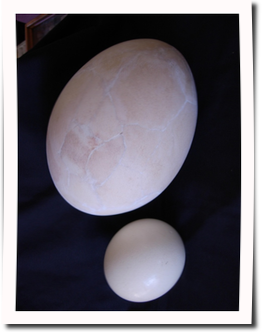
- A bird's heart beats 400 times per minute while resting and up to 1000 beats per minute while flying.
- The world's only wingless bird is the kiwi of New Zealand.
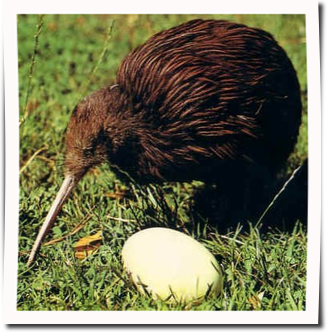
- The homing pigeon, Cher Ami, lost an eye and a leg while carrying a message in World War I. Cher Ami won the Distinguished Service Cross. Its leg was replaced with a wooden leg.
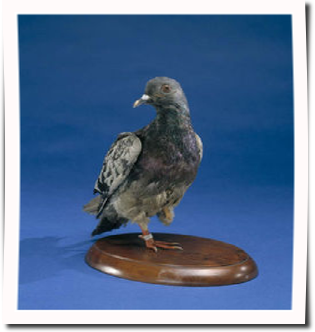
- The only known poisonous bird in the world is the hooded pitohui of Papua, New Guinea. The poison is found in its skin and feathers.
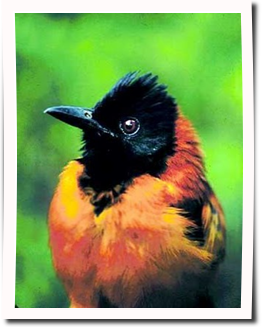
- Migrating ducks and geese often fly in V-shape formations. Each bird flies in the upwash of its neighbor's beating wings and this extra bit of supporting wind increases lift, thereby saving energy.
|

Jonas Müller
Montag, 28. Februar 2011
|
|
Worldwide about twenty-nine species of clownfish or anemonefish are recognized. Depending on species, clownfish are yellow, orange, reddish or blackish and many show white bars or patches. The largest can reach a length of 18 centimetres, while some barely can reach 10 centimetres.
Ecology and habitat
Clownfish are native to warm seas, e.g. the Indian and Pacific ocean, the Great Barrier Reef and the Red Sea.
Clownfish live at the bottom of the sea in reefs or in lagoons. There are no clownfish in the Caribbean.
Diet
The clownfish feeds on small invertebrates which otherwise potentially could harm the sea anemone. Clownfish are omnivores. The diet of the clownfish also consists of copepods, algae, isopods and zoo plankton.
Clownfish are omnivorous: in the wild they eat live food such as algae, plankton, mollusks, and crustacea; in captivity they can survive on live food, fish flakes, and fish pellets
Special Characteristics
Clownfish are the only species of fishes that can avoid the poison of a sea anemone.
Clownfish live in pairs inhabiting a single anemone. When the female dies, the dominant male changes sex and becomes the female. Because clownfish are all born as males. On the top of the hierarchy is the reproducing female followed by the mating male.
In a group of clownfish, there is a strict hierarchy of dominance. The largest and most aggressive female is found at the top. Only two clownfish, a male and a female, in a group reproduce through external fertilization.
Life of a clown fish
Clownfish lay eggs on any flat surface close to their host anemones. Depending on the species, clownfish can lay hundreds or thousands of eggs. Members of some clownfish species become aggressive in captivity; others can be kept successfully with other individuals of the same species.In captivity, the clownfish can live from 3 to 5 years. In the wild, they live 6 to 10 years.
sources : www.wikipedia.com
|

March Lukas
Montag, 28. Februar 2011
|
|
- a fish is an aquatic vertebrate animal
- it is covered with scales, equipped with two sets of paired fins and several unpaired fins
- most fish are "cold-blooded"(ectothermic) à their body temperatures vary as ambient temperatures change
- fish are abundant in most bodies of water
- they can be found in nearly all aquatic environments, from high mountain streams to the abyssal and even hadal depths of the deepest oceans
- fish exhibit greater species diversity than any other class of vertebrates (31,900 species)
source: www.wikipedia.com
|
Eichbichler Johann
Montag, 28. Februar 2011
|
|
What features do reptiles have for adaptation to life on land? (at least 4)
- leathery or scaly skin limits water loss
- tough and leathery eggs
- regulation of temperature enables them to be active for long periods to make eggs develop very successfully
- regulation of temperature enables them to be active for long periods to hunt
- lungs
Mammals are endothermic. What does the possibility of temperature regulation enable animals to do?(at least 3)
- They can live invery different habitats
- allows them to remain alert and active
- the young are cared for by the parents
- they can hunt during the night
|



























Kategorie:
vertebrates